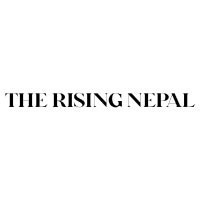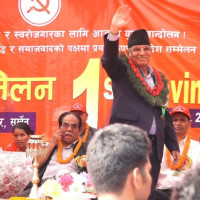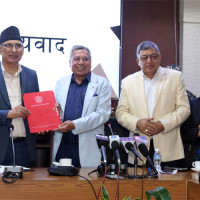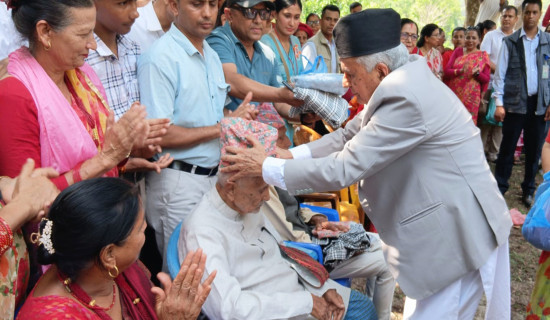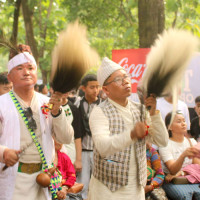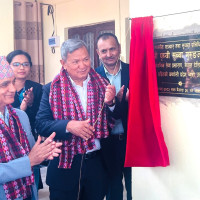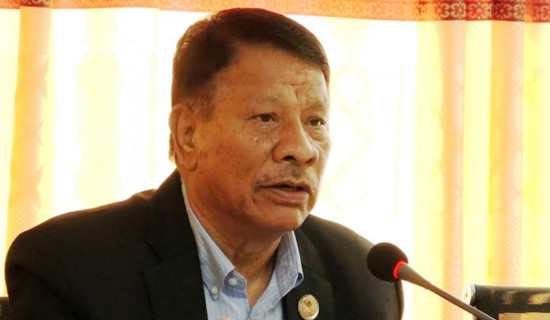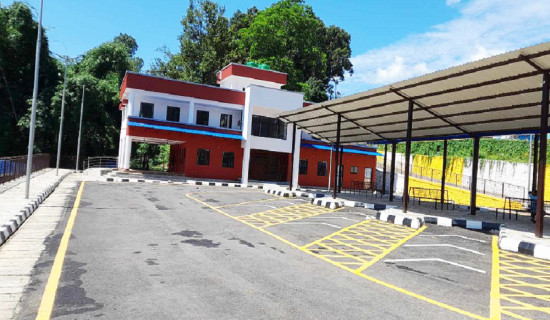- Tuesday, 13 May 2025
'Poetry needs internal rhythm'
By A Staff Reporter,Kathmandu, Apr. 21:
I used to say
I am the whole tree,
and you are just a leaf
But today I realised—
How utterly lifeless is a tree without the leaves
(Translated from Nepali)
When poet Avaya Shrestha recited these lines at Bachamari in Bhaktapur, it sparked a lively discussion among the Nepalbhasa women poets about the imagery, symbols and metaphors used in the poem.
Slam poet Bina Nemkul raised a question, “How can we create internal rhythm in prose poetry?”
Facilitator Rajani Mila added, “What exactly is internal rhythm? How can one tell if a poem possesses it or not?”
Though the questions sounded simple, the answers were not easy to articulate. Avaya turned towards poet Rami Priya, who was seated beside him on stage to answer the emerging poets. Priya, too, looked at Avaya with curiosity.
“Internal rhythm is essential in poetry,” Avaya explained. “A reader or listener can immediately sense when a poem lacks rhythm. After completing your poem, read it aloud. If the rhythm is broken, you’ll notice dissonance in the recitation. Sometimes, just changing a few words can restore the rhythm.” Bina seemed satisfied with the answer, as she had been experimenting with similar techniques herself.
Facilitator Rajani then asked Rami Priya about her experience regarding the same topic. “Even simply changing the order of words in a poem can unlock rhythm,” Rami said. “But that requires continuous effort.”
“Is it enough to simply pour our emotions into words and call it poetry?” asked Kreeta Vajracharya, a gold medalist in Nepalbhasa literature from Tribhuvan University. Rajani added, “Is poetry written with the heart or with the mind?”
Avaya responded, “Poetry is not written by the mind alone, nor by the heart alone—it requires a collaboration of both. There must be a balance between thought and aesthetics. Without artistic expression, a poem becomes merely a statement. Without thought, it becomes lifeless. A poem should be like a beautiful mind in a healthy body.” Rami agreed and shared her own poetry-writing process in support of Avaya’s view.
“I have many ideas for poems, but I lack the right words. What can I do?” asked Manju Maharjan, who began writing poetry after earning Master’s degrees in political science and Nepalbhasa literature. Both speakers gave the same answer, “Continuous practice and dedication—there is no alternatives.”
Several poets including Minarva Sharma Rajopadhyay, Mimala Sharma, Manju Shrestha, Hisilina Shakya, and Rahena Nakarmi posed a collective question, “What is the formula for writing good poetry?”
“There is not a fixed formula like in mathematics. But two things must be clear- what to write, and how to write it," Avaya said. "Once you are clear about the first, focus on using authentic and original language during the writing process. Use native idioms, sayings, phrases, and expressions wherever possible. Nothing is more universal than what is deeply rooted in the local.”
The poetry reading and discussion was organised on Friday afternoon by Kavitaya Layeku (The Palace of Poetry), an organistaion of Nepalbhasa women poets. During the event, poets such as Rajani Mila, Bina Nemkul, Manju Shrestha, Dilkumari Dangol, Basanta Nakarmi, Nabin Prakash Shrestha, Mandira Shrestha, Dilkumar Maharjan, Shova Maharjan, Hisilina Shakya, Gyankeshari Shrestha, Minarwa Sharma Rajopadhyay, Rami Priya, Rahena Nakarmi and others recited their poems in Nepalbhasa. A profound critique on the poems was delivered by Surya Lakoju.
Founded two years ago under the leadership of Jyotiprabha Tuladhar, Kavitaya Layeku has been conducting various programmes to promote the skills of Nepalbhasa women poets.


